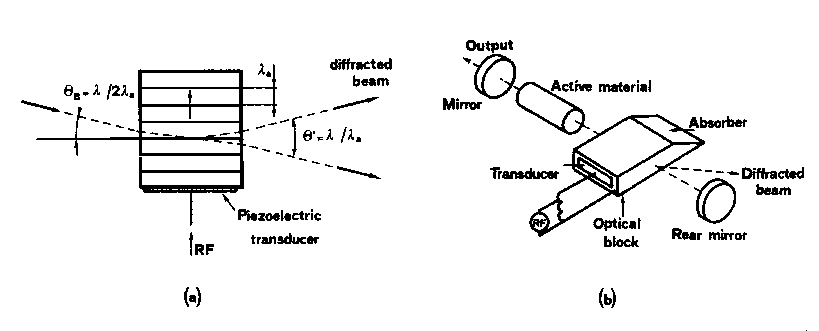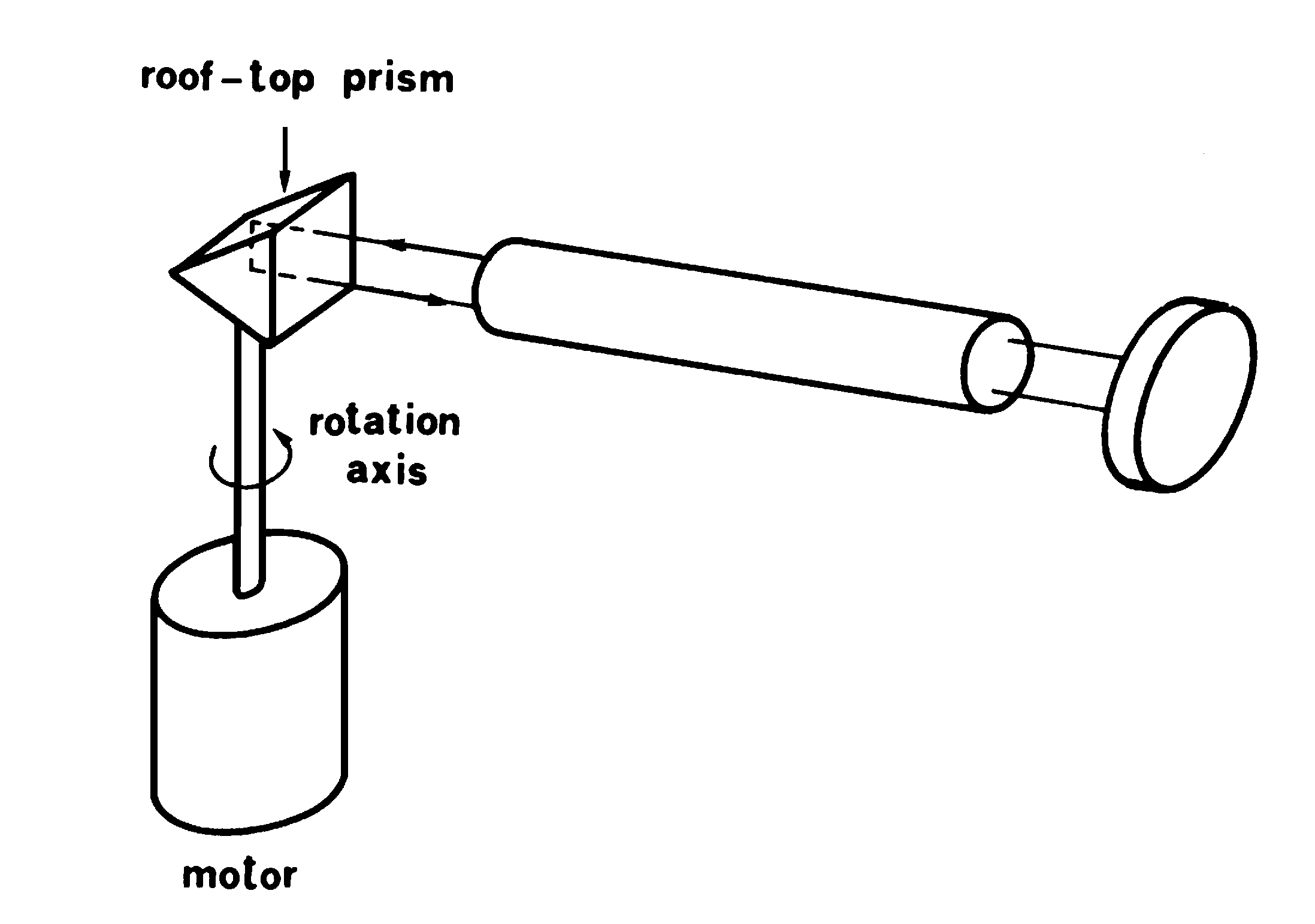Section 2.4: Ultra-short Pulsed Lasers (2)
Remember we have two objectives, one is to make the pulses ultra-short, the other is to make the pulses to have high energy. To obtain high energy, the population inversion should be big enough, far beyond the value of critical value. This can be realized by first letting the energy accumulate to a very high value, then letting it out all of sudden. Following this idea, methods called Q-Switching and mode locking are developed.
Step three: The idea of Q-Switching
"Q" here means the quality of the laser cavity. We know in step one that the stimulated emission process (related to the photon increase process) balances the increase process of population inversion. Photon increase process is possible only when the laser cavity meets some conditions, i.e., the cavity gain G must be bigger than cavity loss g , then the photon gain can be bigger than one. So if we destroy the normal lasing condition for some time and in the same time pump the active medium, without stimulated emission which is the decreasing factor, the population inversion can reach much higher value than the normal saturated value. During this period the cavity is of very high loss, Q is very low. Then we recover the normal lasing condition, i.e., turn Q to very high value very quickly, accumulated energy in the excited atoms gives off very quickly, photons then reaches peak value and deplete the population inversion to values below the threshold. Through this way, the laser pulses are generated with high energy. The key thing here is to use suitable mechanism to switch the laser cavity Q.
Q-Switching is commonly achieved by the following methods:
Electrical Q-Switching: This method makes use of the Pockels effect. A suitable nonlinear crystal, such as KD*P or lithium niobate for the visible to near infrared region or cadium telluride for the middle infrared, is inserted in the laser cavity. When a DC voltage is applied to the crystal, its refractive index changes. When oscillating light travels through it, light will have extra phase shift. We control the time that the DC voltage is applied, then we control the condition for laser oscillation by controlling the phase condition, Q of cavity is thus adjusted. Pockels cell Q-Switching is widely used. Pulse duration for KD*P Q-Switched Nd:YAG laser is about 6 ns.

Figure 2.23 Electric Q-Switch (Orazio Svelto, 1998)
Rotating Prisms: This is the most common mechanical means for Q-Switching. The prism acts as a reflecting mirror of the laser cavity, we turn the prism out of the position of oscillation to decrease the cavity Q, when the population is build up, rotate it back to generate the pulse. This method is simple and inexpensive and can be used for any wavelength. But they are limited by the speed of rotating.

Figure 2.24: Mechanical Q-Switch using rotating prisms
Acoustooptic Q-Switching: This method inserts a block of transparent optical materials in the laser cavity. One side of this optical material is attached a piezoelectric transducer which can generate ultrasonic wave inside the crystal. The travelling ultrasonic wave inside the crystal results in periodical refractive index changes due to the strain induced by sound wave. When proper conditions are met, it acts as an optical grating, diffracting a fraction of the incident light off the oscillating axis, thus lowering the cavity Q. When the transducer is tuned off, the crystal let the light pass through properly, the cavity switched to normal Q. Acoustooptic modulators have the advantage of low optical losses. They are used primarily for repetitive Q-Switching for low gain cw-pumped lasers.
Saturable Absorber Q-Switch: This method uses the saturable absorber materials. They absorb at the laser wavelength and have low values of saturation intensity. So when they are put into the light path, they absorb the incident light greatly thus make the cavity Q very low, population inversion is accumulated. When they reach the saturation point, they are bleached, i.e., they become transparent to the incident light, cavity Q is normal now. This process is self-driven, i.e., the switch is decided by the material itself. The previous three kinds of Q-Switching is driven by outside power, they are called Active Q-Switching, while methods like absorber switching is called Passive Q-Switching.